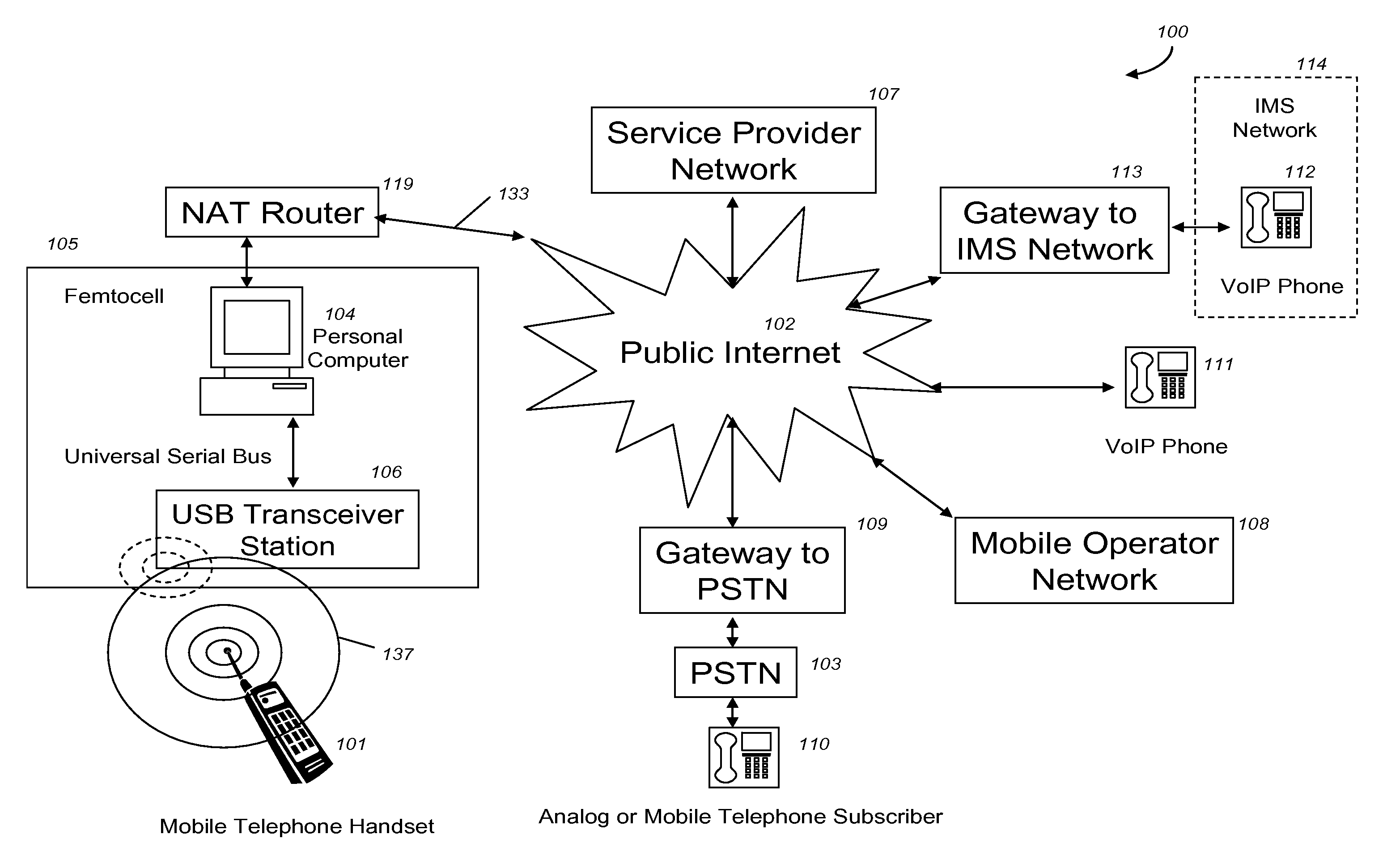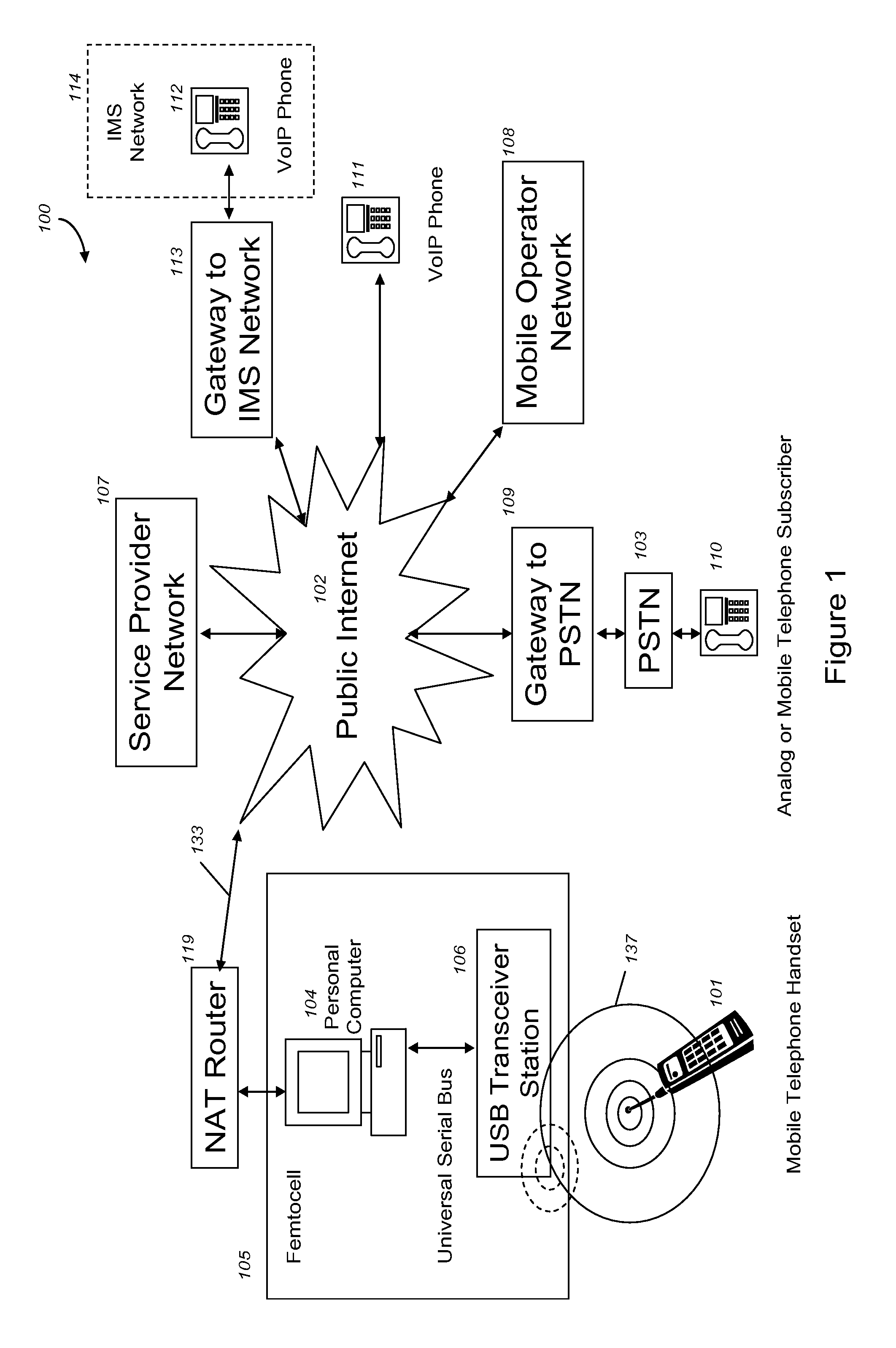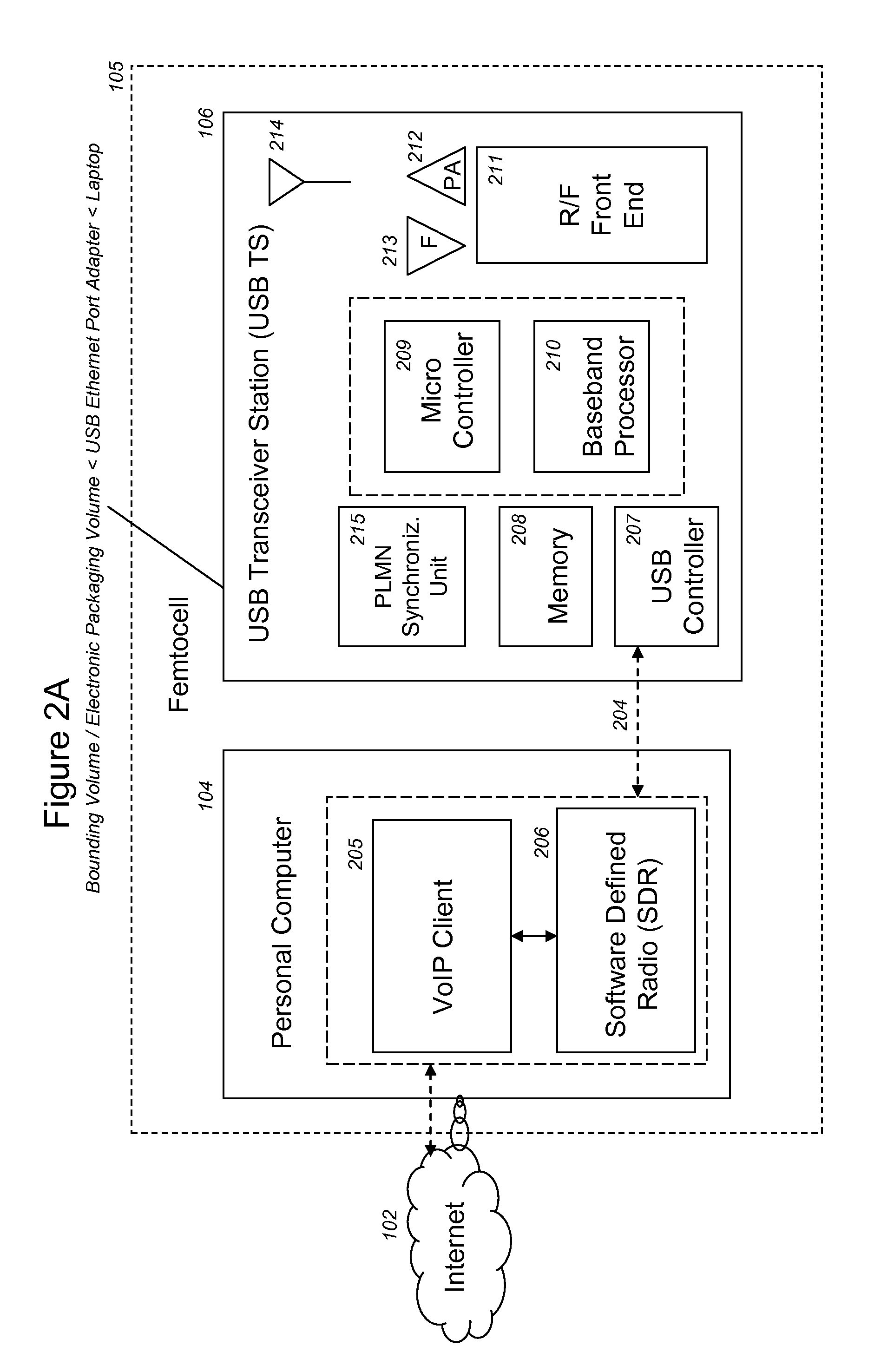VoIP Enabled Femtocell with a USB Transceiver Station
a usb transceiver and femtocell technology, applied in the field of telephone services, can solve the problems of low voice quality, low voice quality, and low processing capacity of the central processing unit (cpu) of most personal computers, and achieve the effects of reducing the cost of scaling the voip network, high quality audio, and reducing the cost of form factor and component costs
- Summary
- Abstract
- Description
- Claims
- Application Information
AI Technical Summary
Benefits of technology
Problems solved by technology
Method used
Image
Examples
Embodiment Construction
[0053]FIG. 1 is a graphical illustration of an exemplary system for a service provider to connect telephone calls with a femtocell 105 through VoIP 100. The system 100 includes a mobile station (MS) 101 from which a user wishes to place or receive a call to other users accessible either through the Internet 102, PSTN 103, or IMS network 114. The MS 101 connects to femtocell 105, which comprises a USB Transceiver Station 106 connected to a personal computer 104 through the universal serial bus. The USB Transceiver Station 106 communicates with the MS 101 via a licensed radio spectrum. The personal computer 104 can connect to the Internet 102 via a NAT router 119, although the personal computer could also bypass the NAT router 119 and access the Internet 102 directly.
[0054]The computers illustrated in FIG. 1 may be coupled to a LAN through a network interface or adaptor. When used in a WAN network environment, the computers may typically include a modem or other means for establishing...
PUM
 Login to View More
Login to View More Abstract
Description
Claims
Application Information
 Login to View More
Login to View More - R&D
- Intellectual Property
- Life Sciences
- Materials
- Tech Scout
- Unparalleled Data Quality
- Higher Quality Content
- 60% Fewer Hallucinations
Browse by: Latest US Patents, China's latest patents, Technical Efficacy Thesaurus, Application Domain, Technology Topic, Popular Technical Reports.
© 2025 PatSnap. All rights reserved.Legal|Privacy policy|Modern Slavery Act Transparency Statement|Sitemap|About US| Contact US: help@patsnap.com



